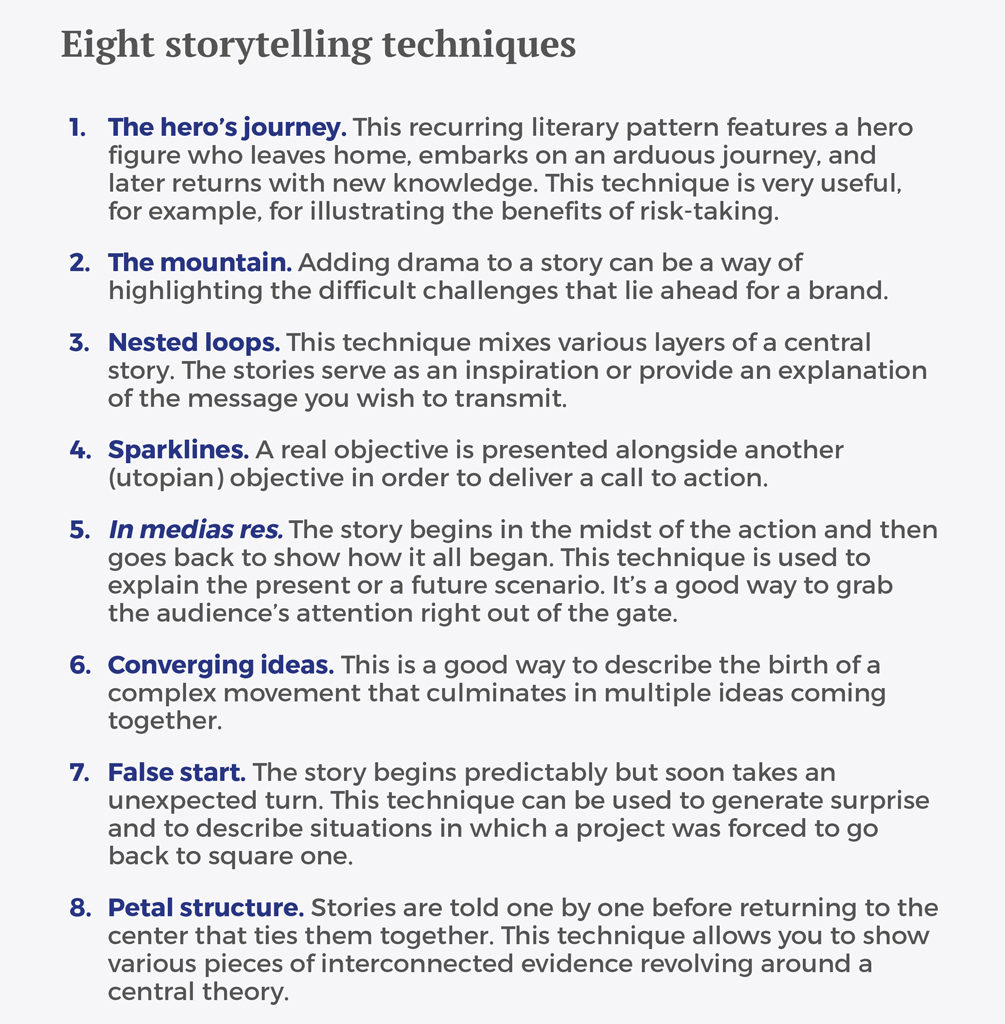The last thing a good communicator, publicist, or marketer wants is for his message or campaign to go unnoticed. A message shouldn’t just blend into the background; it has to have an impact and get through to people. These are old needs, to be sure, but nowadays we meet them by using the latest multimedia techniques to connect with the public. One such technique—storytelling—can achieve excellent results by connecting and interacting with consumers from the brand’s point of view; the emotional component of this tool is what sets it apart from other forms of communication.
Connecting with people
When harnessed for the aim of connecting with people, well-designed storytelling is capable of reaching audiences on both the rational and emotional levels; for professionals concerned with branding—a practice powered by the value, identity, and trustworthiness of an organization—this is a tantalizing objective. A product or service should transmit the company’s essence—its way of thinking and acting within a particular context. A brand’s reputation in the marketplace depends on all of these factors. Logically, therefore, branding and storytelling are a match made in heaven.
A good story has the communicative power to spread knowledge, make people think, and engage with the public. Perhaps most importantly, a story can transmit an organization’s purpose, culture, products, and services.
A strategic tool
Given its virtues, storytelling is an art form that should occupy a strategic position in any project. Many projects begin with goal-setting and planning, followed by communicative messaging aimed at lending definition and visibility to the project. Storytelling should be incorporated at the inception of these strategies. Taken as a reference, a story serves not only to transmit a message but also to give meaning to a project from the outset. The idea is to use narratives not only for communication but also to infuse projects with meaning and purpose.
Narratives, therefore, have multiple applications. Besides their utility in branding and advertising, stories can add lots of value to presentations, reports, internal memos, teamwork, prototype design, audience research, and much else. This is especially true in the digital age, when words must be accompanied by the various resources offered by online applications.
In today’s digital world, every aspiring storyteller must learn to read and write stories with words and images that inform, inspire, and persuade, all at once. But there’s more to it than just linking words and images: you also have to master narrative techniques and their language.
A good story has the communicative power to spread knowledge, make people think, and engage with the public.
Standing out, touching a nerve
In order to inspire, inform, and persuade, you have to be well acquainted with your audiences. You have to understand what moves and excites them. Once you do, it’s much easier to engage with people—for example, by interacting with them on social media. But content—especially story-based content—is the foundation on which this engagement is built. Without content, you have no chance of creating a community.
In a world that is oversaturated with information and messages, we have to be aware that we live in an “attention economy.” Attention is the most valuable thing consumers can give a brand. Stories that achieve this effect possess the following attributes:
- They deal with issues that matter to the audience.
- They focus on the audience’s interests or make them aware of their needs.
- They encourage audiences to collaborate in their stories.
- They create emotional connections with the brand.
- They produce memorable experiences.
- They infuse mere information with meaning.
- They are designed to be shared and to generate conversations and communities.
“To be a person is to have a story to tell”
These ideas have materialized in various formats over the course of human history. In the words of the Danish writer Isak Dinesen, “To be a person is to have a story to tell.”
Since the dawn of time, human beings have demonstrated a need to transform their experiences into stories—using images or other representations that leave a record of their experience—in order to lend meaning to their lives. There are countless examples of representations that essentially say, “I was here” or “This is how I understand life.”
Storytelling, as applied to branding, uses this approach to engage with the brand’s stakeholders. Storytellers must come equipped with experiences, reflections, interpretations, visions, curiosity, and an understanding of people. They should also possess thoughtful and profound knowledge of narrative techniques and audiovisual language, always with the aim of making an emotional impact and creating empathy with communities around brands.

© IE Insights.











